The reduction of deaths is one of the positive figures of the use of automatic sprinklers, evidence of the effectiveness and urgency of promoting their adoption.
By Jaime A Moncada*
For those of us who specialize in fire safety and who know the benevolences of fire sprinklers, this seems like an insolent question. It's a question on which we can quickly offer excellent answers: that it's a mature and proven technology; whereas statistics confirm that it is the most effective fire protection system; that the use of sprinklers in universal and is rooted in the building codes of almost all advanced countries.
My late father, Mr. Jaime Moncada Pérez, who for several decades promoted the use of automatic sprinklers in Latin America, perhaps summed it up best when in 2016 he said while receiving the H.W. Marryatt Award from the International Fire Sprinkler Association (IFSA)
"What is clear and has no discussion is that automatic sprinklers are the best existing and known system to control fires in the vast majority of risks found in the structures where man is raised, where he lives, studies, works, has fun and also where this cycle of human evolution restarts. It is the most cost-efficient system, it is the most responsible for the decrease in deaths in fires."
But we know that, although quite possibly not our clients, or the bureaucrats who make the building regulations, or the architects and builders who have influence over the fire safety systems that are installed in the construction projects they advance. Consequently, it would be worth summarizing, in this column, some reasons that make this technology the backbone of fire safety strategy in the modern world.
Use of Automatic Sprinklers
A recent statistical study on the use of sprinklers worldwide, prepared by Russel P.
Image Worldwide use sprinklers (title it "Sprinklers installation by year – 2007)
Fleming and Alan Brinson found that between 1990 and 2007, sprinkler installation grew on average by 6% annually. This analysis, in which I helped by compiling information relevant to Latin America, concludes that by 2007, worldwide, 117.3 million sprinklers were installed per year, of which 2.5 million were installed in Latin America.
That is to say that only 2.1% of the sprinklers that were installed in the world, were placed in Latin America. Latin America contributes approximately 8.2% of the world's population and 7.4% of the world's gross domestic product.
This means that if the penetration of sprinklers were similar in Latin America, as it is currently in the economy of the United States or China, approximately six times more sprinklers should be installed per year in our region.
As a result, the penetration of sprinklers in Latin America has ample capacity to grow.
The effectiveness of Automatic Sprinklers
In 2021, NFPA released its latest report on the experience of automatic sprinklers in the U.S. This report, once again, confirms that automatic sprinklers reduce the impact of fires.
For example, when sprinklers were present during a fire, the probability of dying from the fire dropped by 89%.
In 95% of the fires, the fire was confined to the site of the start of the fire. In 77% of cases, the operation of a single sprinkler controlled the fire, and in 97% of fires, five or fewer sprinklers operated.
In 99% of cases, 10 or fewer sprinklers operated, invalidating the belief, shown in countless Hollywood movies, that when sprinklers operate in a fire, all sprinklers open simultaneously.
In the period between 2015 and 2019, in general terms, automatic sprinklers operated in 92% of fires in all types of structures, when sprinklers were present in the area of the fire.
When the fire was large enough to operate the sprinklers, they were effective in 96% of cases. When the sprinklers did not operate, the most common reported reason was that the sprinkler control valve was closed before the fire, a condition that can be easily remedied with a simple inspection protocol.
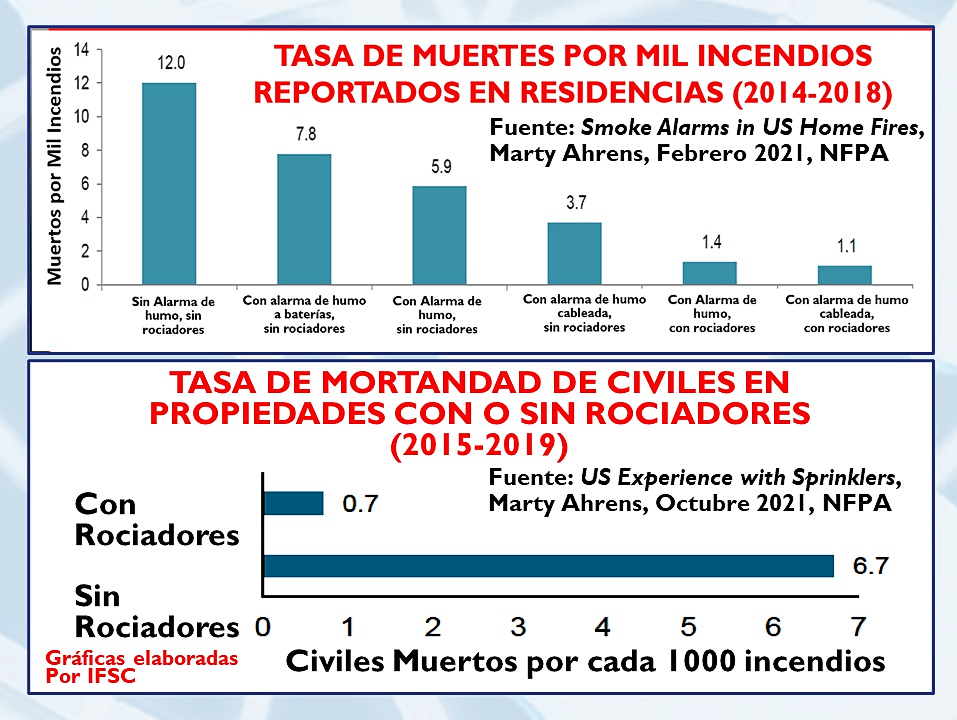
But perhaps the most important statistic about the impact of sprinklers on our society is their reduction in deaths during fires. According to NFPA statistics between 2015 and 2019, the civilian death rate, excluding firefighters, on properties without sprinkler protection is nearly 10 times higher than on property protected with sprinklers.
Because today 93% of civilian deaths in structural fires occur in the residence, the impetus for fire protection legislation in the U.S. has focused on requiring the protection of new homes with residential sprinklers.
There are already several jurisdictions that have adopted this type of legislation, such as the State of Maryland, where I live, the first in the American Union to require the protection of all new homes with sprinklers.
In the wake of this effort, new statistics have been compiled showing the impact of sprinklers on nursing homes.
For example, the death rate in a residence without smoke alarms and without sprinklers is almost 11 times higher than in a residence protected with residential sprinklers and smoke alarms. Luckily for my family, we reside in a sheltered home with residential sprinklers and smoke alarms.
Impact on fire statistics
In order to understand the impact that automatic sprinklers have had in the U.S., we must take a closer look at the statistical trends in fires in this country, statistics that NFPA has been collecting and analyzing for several decades.
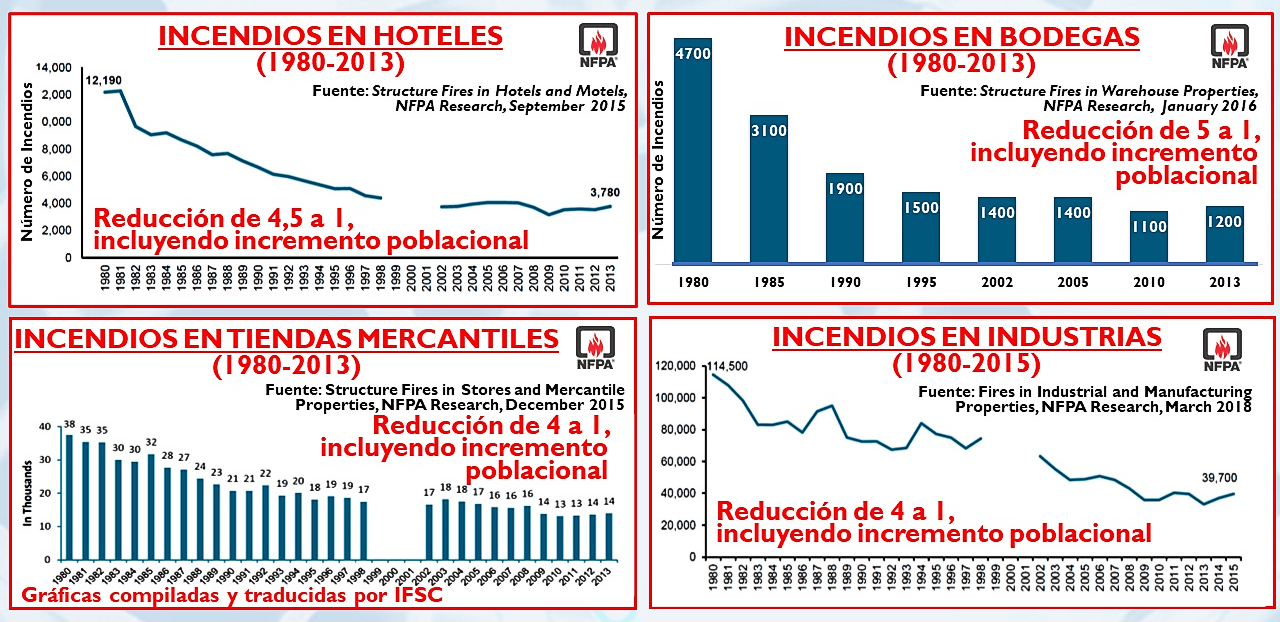
These statistics have seen a marked decrease, since 1980, in the number of structural fires excluding residential fires. Fire protection in hotels, hospitals, high-rise buildings, merchant shops, prisons, warehouses, industries and more have included increasingly stringent requirements over the past forty years. As a result, catastrophic fires in such buildings are now rare.
The attached graphs, on a sample of these occupations, help to understand how year after year there has been a decrease in the number of fires, by a factor between 4 and 5, when we include in this equation the increase in population. That is, in 2013 there were 4 to 5 fewer fires than in 1980, an extraordinary decrease.
Statistics on the number of reported deaths and injuries, as well as the overall cost of all these fires, show similar trends.
These statistics are important to all of us because they focus on fires in the most common type of buildings in a city and exclude vehicular, outdoor fires (such as wildfires) and residential fires.
The most plausible reason to understand some of this decrease in the impact of fires on American society is that the fire protection systems that have been installed in buildings, specifically automatic sprinklers, are working as they should, and that sprinklers coupled with better construction methods result in more effective protection.
Reduction in cost and deaths
Dr. John L. Bryan, who was my professor in the school of fire protection engineering at the University of Maryland, studied property damage in fires with and without sprinklers, as well as the incidence of civilian deaths in fires with and without sprinklers.
Their analysis spans a decade, between 1989 and 1998, and found that when sprinklers are present in a fire, property damage is substantially reduced, by 49% to 70%.
It also analyzed civilian deaths per thousand fires, and found that there are reductions in all types of occupations, and in certain occupations (e.g., public assembly, educational, offices, industrial plants, and warehouses) found no reports of civilian deaths in fires where automatic sprinklers were present.
Reduction of deaths with sprinklers
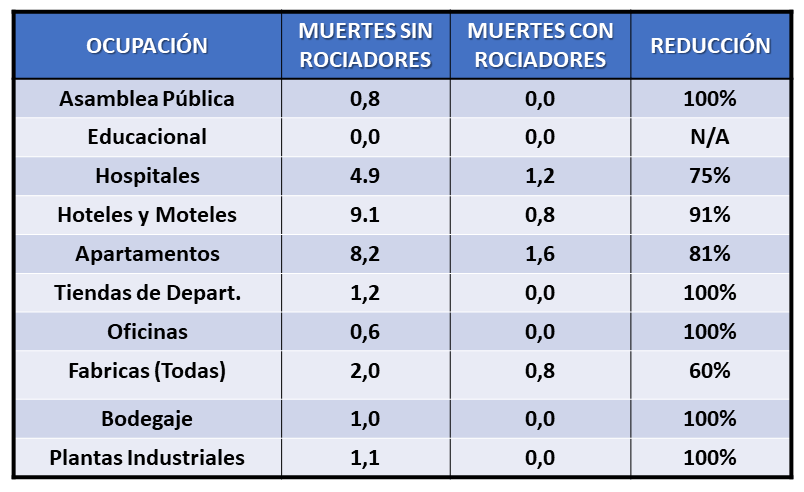
Harm reduction with sprinklers
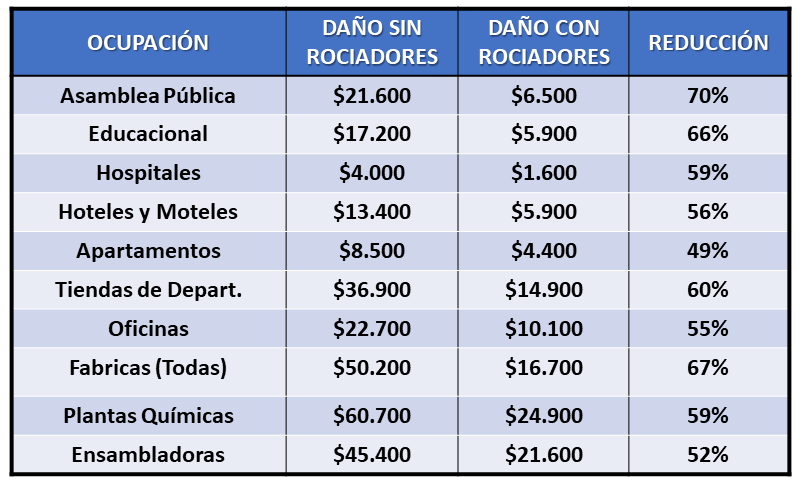
Final comments
The effectiveness of automatic sprinklers, especially wet systems, are excellent. Australian statistics and the U.S. Department of Energy, which have more complete statistical reports, have reported that 99.5% and 99.4% of fires were controlled by sprinklers.
The effectiveness percentages reported by NFPA are not that high, perhaps for two main reasons. First, that the basis of fire reports in the U.S., called NFIRS (National Fire Incident Reporting System), is voluntary, and second, because of the way we are selectively reporting these types of incidents.
Many fires would not be reported by the same effectiveness of automatic sprinklers.
Effectiveness of sprinklers
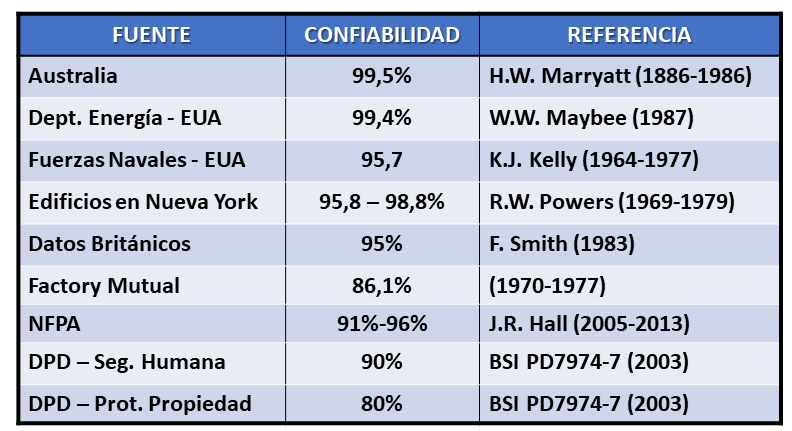
For example, in a hotel where the maid mistakenly stores towels very close to a light bulb, the bulb heats the towels until they turn on, and where seconds later an automatic sprinkler operates that was protecting the maid's room. This fire is quickly controlled by the sprinkler.
Moments later, security personnel respond to the alarm from the sprinkler flow switch, find the source of the fire, make sure the fire is under control, and close the automatic sprinkler system control valve.
In this case, which happened to one of my clients in Mexico City, neither the firefighters were notified, because everything was quickly controlled, nor the insurance company was informed because the damage was much less than the deductible of the insurance premium.
This example illustrates an issue that until recently has begun to be aired, and has to do with the fact that a significant percentage of fires (no one I know has been able to estimate) are not being reported, as was done in the past, because the fire suppression system worked properly, controlled the fire quickly, eliminating the need for contact with firefighters, and the cost of the incident was so low that it did not merit reporting it to the insurance company.
Reports to firefighters and insurance companies are the only statistical sources we know of on fire protection.
 * Jaime A. Moncada, PE, a fire protection engineer, is a principal of International Fire Safety Consulting (IFSC), a fire protection engineering consulting firm based in Washington, DC with offices in Latin America. Mr. Moncada's email address is [email protected].
* Jaime A. Moncada, PE, a fire protection engineer, is a principal of International Fire Safety Consulting (IFSC), a fire protection engineering consulting firm based in Washington, DC with offices in Latin America. Mr. Moncada's email address is [email protected].


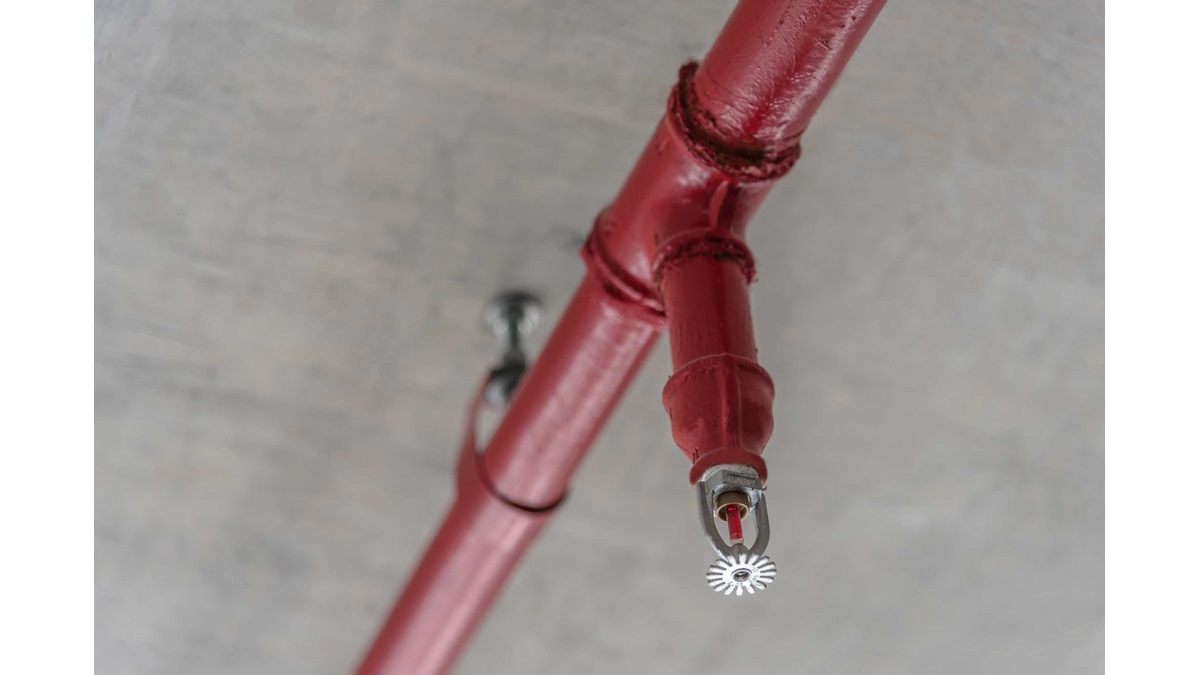























Leave your comment